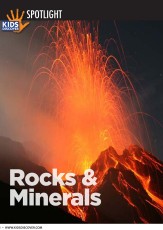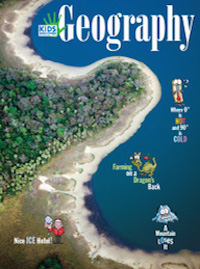 Rocks and stones have been a part of our world for millions of years. Many young children have a natural attraction to and love learning about rocks. My theory is that they are closer to the ground than adults and thus more likely to notice these pretty natural items. In addition to being interesting and sometimes sparkly items from nature, stones have also been used to create outdoor art and sculptures for thousands of years.
Rocks and stones have been a part of our world for millions of years. Many young children have a natural attraction to and love learning about rocks. My theory is that they are closer to the ground than adults and thus more likely to notice these pretty natural items. In addition to being interesting and sometimes sparkly items from nature, stones have also been used to create outdoor art and sculptures for thousands of years.
Famous Stone Creations
Stonehenge is probably the most famous stone creation in the world. It is located in England and estimated to be more than 4000 years old! The stones stand more than 20 feet high and are arranged in a circle. Researchers and historians are still not sure why the monument was created.
Another very famous set of stone structures are the carved heads of Easter Island, a small island in the southeastern Pacific Ocean. These large stone figures were created by tribes on the island as part of their worship practices. The heaviest of the structures weights 86 tons (as much as 20 elephants!).
Some one of the more famous and frequently built stone structures are called cairns (pronounced ‘kern’). A cairn is a man-made stack of stones; the name originated in Scotland and literally translates to mean ‘pile of stones’. If you’ve ever visited a large lake or if your family goes hiking, you may have noticed piles of rocks on the beach or along the hiking trail.
Cairns can be found around the world and originated thousands of years ago. Explorers used them to mark newly discovered geographic areas and to conceal their messages. Travelers and hikers have used them as trail markers and guides to help them find their way through the wilderness. Some cultures also used them as memorials and for burials. And many people still build them today on coastlines, trails and in outdoor parks.
Creating Your Own Stone Structure
Anyone can create a cairn – the only items you’ll need are rocks or stones. You can use your own rock collection or head outside and find a group of stones to use for this project. Building a cairn is a wonderful way to encourage kids to explore science and express their creativity.
The choice of the stones allows for artistic expression – will you look for rocks of similar color? Should they be round, flat, large or small? Kids can also be creative with the shape of their cairn. The pile can be small and wide, tall and thin or shaped like an inverted cone. There are so many possibilities since there is no right or wrong way to design a cairn.
There’s also quite a bit of science (physics) involved in constructing a cairn. When building a cairn, it’s important to think about how you will choose to stack and balance the stones. Will you have one large stone at the bottom or a group of smaller stones to support the structure? Can you lay them flat to stack them or would you rather lean them on their sides so your cairn is taller? Also, if you are hoping to conceal messages like the early explorers did with their cairns, will the center be hollow?
So what type of cairn will you build? This is a fun family activity that can be done in your own backyard, while on vacation or when you’re out at a local park. Be sure to discuss the idea of balance as you construct your cairn. If you build a cairn on a trail, make sure it’s constructed off to the side so hikers won’t trip over your artistic creation. And the next time you visit a National Park or go hiking, make sure to keep your eyes open for these unique stone towers.




